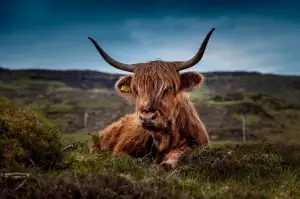Master the Art of Roast Pork: Unveiling the Secrets to Perfectly Roasted Pork

- Introduction to Roast Pork
- Selecting the Perfect Cut of Pork
- Preparing the Pork for Roasting
- Seasoning and Flavoring Options for Roast Pork
- Roasting Techniques for Succulent Pork
- Monitoring the Cooking Process
- Resting and Carving the Roast Pork
- Serving Suggestions and Pairings for Roast Pork
- Tips and Tricks for Perfectly Roasted Pork
- Conclusion: Mastering the Art of Roast Pork
Introduction to Roast Pork
Introduction to Roast Pork:
Roast pork is a culinary delight that has been enjoyed by food enthusiasts for centuries. The combination of tender meat and crispy, flavorful skin makes it a favorite dish for special occasions and holiday feasts. Whether you are a seasoned chef or a novice in the kitchen, mastering the art of roast pork will elevate your cooking skills to new heights. In this article, we will unveil the secrets to achieving perfectly roasted pork every time. From selecting the perfect cut of pork to seasoning and flavoring options, roasting techniques, and serving suggestions, we will guide you through each step of the process. Get ready to embark on a journey of culinary excellence as we delve into the artistry behind roast pork.
Selecting the Perfect Cut of Pork
When it comes to roast pork, selecting the perfect cut of meat is crucial. The ideal cut for roasting is one that has a good amount of marbling and a layer of fat on top. This will ensure that the meat stays juicy and tender during the cooking process.
One popular choice for roast pork is the pork loin. This cut is lean and tender, making it easy to carve into neat slices. Another option is the pork shoulder or butt, which has more fat and connective tissue. This cut is perfect for slow roasting, as it becomes incredibly tender and flavorful.
If you prefer a more decadent roast, you can opt for a bone-in pork rib roast. This cut has a generous amount of fat and marbling, resulting in a rich and succulent flavor.
When selecting your pork, make sure to choose cuts that are fresh and have a pinkish-red color. Avoid any cuts with excessive amounts of fat or those that appear discolored or have a strong odor.
By choosing the right cut of pork, you are setting yourself up for success in achieving perfectly roasted pork that will be the star of your next meal.
Preparing the Pork for Roasting
Preparing the Pork for Roasting:
Before the pork can be roasted to perfection, it is essential to properly prepare it. Start by ensuring that the pork is completely thawed if it was frozen. Pat it dry with paper towels to remove any excess moisture, as this will help achieve a crispy exterior.
Next, score the skin of the pork with a sharp knife in a crisscross pattern. This will allow the fat to render and create a deliciously crispy crackling. Be careful not to cut too deeply into the meat.
If desired, marinating the pork can add an extra layer of flavor. Choose a marinade that complements your chosen seasoning and allow the pork to marinate in the refrigerator for at least 2 hours or overnight for maximum flavor infusion.
Lastly, bring the pork to room temperature before roasting. Allowing it to sit at room temperature for about 30 minutes will ensure even cooking throughout. Preparing the pork properly sets the stage for a truly delectable roast.
Seasoning and Flavoring Options for Roast Pork
When it comes to seasoning and flavoring roast pork, the options are endless. The key is to enhance the natural flavors of the meat without overpowering it. A classic option is a simple combination of salt, pepper, and garlic powder. This allows the pork's natural sweetness to shine through. For a more robust flavor, try marinating the pork overnight in a mixture of soy sauce, honey, ginger, and garlic. This will infuse the meat with a delicious Asian-inspired taste. Another popular choice is to use a dry rub made from a blend of herbs and spices such as paprika, thyme, rosemary, and cayenne pepper. This adds depth and complexity to the roast pork. Experiment with different seasonings and flavors to find your perfect combination. Remember to always taste as you go and adjust accordingly.
Roasting Techniques for Succulent Pork
Roasting Techniques for Succulent Pork:
To achieve succulent and flavorful roast pork, it is essential to master the art of roasting. Here are some techniques that will help you achieve perfection:
1. Preheat the oven: Before placing the pork in the oven, make sure to preheat it to the recommended temperature. This ensures even cooking and a crispy exterior.
2. Use a roasting rack: Placing the pork on a roasting rack allows air to circulate around the meat, promoting even browning and preventing it from sitting in its own juices.
3. Baste regularly: Basting is key to keeping the pork moist and adding extra flavor. Brushing it with pan drippings or a marinade every 30 minutes helps create a beautiful glaze and enhances the taste.
4. Start high, then lower the heat: Begin by roasting the pork at a higher temperature (around 425°F/220°C) for about 15 minutes to sear the outside and lock in juices. Then reduce the heat to around 325°F/160°C for slow, gentle cooking.
5. Use a meat thermometer: To ensure your roast pork reaches the perfect internal temperature, use a meat thermometer inserted into the thickest part of the meat without touching bone. For juicy pork, aim for an internal temperature of 145°F/63°C.
6. Let it rest: Once your roast pork reaches its desired temperature, remove it from the oven and let it rest for about 10-15 minutes before carving. This allows the juices to redistribute throughout the meat, resulting in tender and juicy slices.
By following these roasting techniques, you can achieve succulent roast pork with a crispy exterior and juicy interior that will impress your guests at any gathering or special occasion.
Monitoring the Cooking Process
Monitoring the cooking process is crucial to ensure that your roast pork turns out perfectly cooked. As the pork roasts, it's important to keep an eye on the internal temperature using a meat thermometer. Insert the thermometer into the thickest part of the meat, away from any bones. The ideal internal temperature for roast pork is 145°F (63°C).
Check the temperature regularly to avoid overcooking or undercooking. Be careful not to leave the thermometer in too long, as this can affect the accuracy of the reading. If you notice that the pork is browning too quickly on the outside, you can cover it loosely with aluminum foil to prevent further browning while allowing it to continue cooking.
Additionally, pay attention to any juices that accumulate in the roasting pan. These juices are packed with flavor and can be used for making a delicious gravy or sauce. Baste the pork occasionally with these juices during cooking to keep it moist and flavorful.
Remember that cooking times may vary depending on factors such as oven temperature and size of the roast. It's always better to rely on internal temperature rather than time alone when determining if your roast pork is done.
By closely monitoring the cooking process, you'll be able to achieve a perfectly cooked roast pork with juicy meat and a crispy exterior.
Resting and Carving the Roast Pork
Resting the roast pork is a crucial step in the cooking process. Once you remove the pork from the oven, let it rest for about 15-20 minutes before carving. This allows the juices to redistribute throughout the meat, resulting in a more tender and flavorful roast.
During this resting period, cover the pork loosely with aluminum foil to keep it warm. This also helps to retain its moisture. Avoid cutting into the roast immediately as it will cause the juices to escape, leaving you with a dry and less appetizing result.
When it comes time to carve, use a sharp carving knife and slice against the grain of the meat. This will ensure each slice is tender and easy to chew. Start by cutting thin slices and adjust according to your preference.
Remember, presentation matters! Arrange the slices on a platter or individual plates, showcasing their succulent texture and enticing aroma. Garnish with fresh herbs or citrus wedges for an added touch of elegance.
By allowing your roast pork to rest properly and carving it with care, you'll be rewarded with perfectly cooked slices that are moist, tender, and bursting with flavor. So take your time during this step and savor every delicious bite.
Serving Suggestions and Pairings for Roast Pork
Serving Suggestions and Pairings for Roast Pork:
Roast pork is a versatile dish that pairs well with a variety of flavors and accompaniments. Here are some serving suggestions to enhance your roast pork experience:
1. Classic Pairings: Serve your roast pork with traditional accompaniments such as roasted potatoes, steamed vegetables, and applesauce. The combination of tender meat, crispy potatoes, and tangy applesauce creates a perfect balance of flavors.
2. Sauces and Gravies: Elevate the taste of your roast pork by serving it with flavorful sauces or gravies. Consider options like apple cider reduction, mustard sauce, or a rich pan gravy made from the drippings.
3. Fruity Complements: Add a touch of sweetness to your roast pork by pairing it with fruit-based side dishes. Try roasted peaches or pears, cranberry chutney, or a refreshing citrus salad.
4. Herbaceous Accompaniments: Enhance the herb-infused flavors of your roast pork by serving it alongside fresh herbs like rosemary, thyme, or sage. These aromatic herbs add depth and complexity to the dish.
5. Bread and Rolls: Serve slices of succulent roast pork in crusty bread rolls for a delicious sandwich option. Add some pickles or coleslaw for an extra crunch and tanginess.
6. Wine Pairings: Roast pork pairs well with both red and white wines. For lighter cuts of pork, opt for a crisp white wine like Chardonnay or Sauvignon Blanc. For richer cuts, consider a medium-bodied red wine such as Pinot Noir or Merlot.
Remember to consider your guests' preferences when choosing sides and pairings for your roast pork. With these suggestions in mind, you can create a memorable dining experience that perfectly complements the succulent flavors of your perfectly roasted pork.
Tips and Tricks for Perfectly Roasted Pork
Tips and Tricks for Perfectly Roasted Pork:
1. Use a meat thermometer to ensure the pork reaches the desired internal temperature. This will prevent overcooking or undercooking.
2. Let the pork come to room temperature before roasting. This allows for more even cooking and juicier meat.
3. Baste the pork with its own juices or a flavorful marinade during roasting to enhance its taste and keep it moist.
4. For extra crispy skin, pat the pork dry before roasting and rub it with oil or butter.
5. Consider using a roasting rack to elevate the pork, allowing air to circulate around it and promote even browning.
6. To add depth of flavor, consider adding aromatics like garlic, herbs, or citrus zest to the roasting pan.
7. Rest the roasted pork for at least 10-15 minutes before carving. This allows the juices to redistribute, resulting in tender and juicy meat.
8. Use a sharp carving knife to slice the roast against the grain for maximum tenderness.
9. Save any leftover drippings from the roasting pan to make a delicious gravy or sauce to accompany your roast pork.
By following these tips and tricks, you can achieve perfectly roasted pork that is juicy, flavorful, and sure to impress your guests at any gathering or special occasion.
Conclusion: Mastering the Art of Roast Pork
In conclusion, mastering the art of roast pork is a journey that requires patience, practice, and a keen eye for detail. By selecting the perfect cut of pork, preparing it properly, and using the right seasonings and flavors, you can elevate this humble dish to new heights. Experiment with different roasting techniques to achieve succulent and tender meat every time. Remember to monitor the cooking process closely and allow the roast pork to rest before carving. Finally, serve it with your favorite sides and pairings to create a memorable dining experience. With these tips and tricks in mind, you are well on your way to becoming a roast pork aficionado. Happy roasting!
Published: 14. 11. 2023
Category: Food



